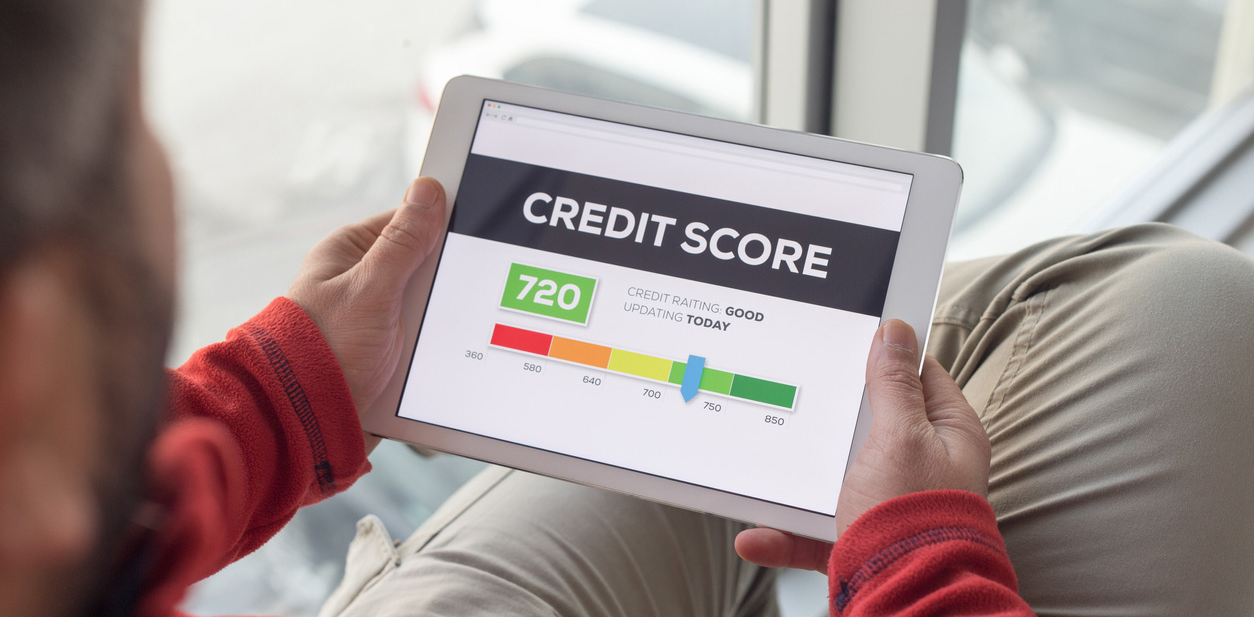How well do you manage debt?
If you’ve ever applied for a loan, there’s a high chance the lender reviewed your debt-to-income ratio. Why? Because it sums up your capacity to borrow more money. It tells a lender if you’re a high-risk borrower.
Think about how a loan works. To help you pay for something you can’t afford (a house, car, or tuition), you can apply for a loan. You borrow money under the condition that you’ll pay the loan (and interest) back over time. Essentially, you’re promising a portion of your future income.
That’s what your debt-to-income ratio calculates — the percentage of your income that’s already committed to debt payments.
What Is a Debt-To-Income Ratio?
Your debt-to-income ratio, or DTI, compares your monthly debt payments to your gross monthly income.
Along with your credit history, lenders use your DTI to see if you’re a good candidate for a loan. It’s a simple, useful metric to determine how well you manage debt — and if you can afford to take out another loan.
How Is Your Debt-to-Income Ratio Calculated?
First, you’ll need to identify every source of monthly income and every monthly debt payment you make.
Examples of monthly debt include:
- Mortgage or rent payments
- Alimony or child support payments
- Student loan payments
- Car loan payments
- Personal loan payments
- Credit card payments (you can use the minimum payment)
- Other debt that show up on your credit report
Examples of monthly income include:
- Salary
- Tips
- Self-employment income
- Rental property income
- Investment dividends
- Pension income
- Social Security income
Next, calculate your debt-to-income ratio in four easy steps.
- Add all of your monthly debt payments together.
- Add all of your monthly gross income together (i.e. before taxes).
- Divide (A) your total monthly debt payments by (B) your total monthly gross income.
- Multiply this number by 100 to get a percentage.
(DTI) Debt-to-Income Ratio Calculator
Your debt-to-income ratio, or DTI, is a percentage that compares your monthly debt payments to your gross monthly income.
Many auto refinance lenders have a maximum DTI of around 50%. However, if you're applying for a mortgage, lenders prefer a DTI under 36%.
Here’s an example
Let’s say you have a car loan and your monthly payment is $500. Let’s assume your pre-tax monthly income is $4,000 and your total monthly debt payments are $1,625, including the new loan.
Example A: Calculate Your Debt-to-Income Ratio
Pre-tax income: $4,000
Credit card minimum: $25
Student loan: $400
Auto loan: $500
Rent: $700
Total debt payments: $1,625
To calculate your DTI, divide your total monthly debt payments ($1,625) by your pre-tax income ($4,000) and multiply by 100.
$1,625 ÷ $4,000 x 100 = 40.6%
In this example, your DTI would be 40.6%.
You might be wondering, “What about other monthly expenses?” That’s a great question.
Even though you have other mandatory expenses (phone bill, groceries, memberships, etc.), those expenses don’t factor into a lender’s analysis.
But that doesn’t mean these budget items shouldn’t factor into your analysis of whether you can afford a loan.
Are There Different Types of Debt-to-Income Ratios?
The short answer: sort of.
If you’re trying to get a loan to buy a house, mortgage lenders will also look at your front-end ratio (also known as a housing ratio). Your front-end ratio only factors in your housing costs, such as mortgage payments, property taxes, and homeowners insurance. Instead of total debt payments, you’d divide your monthly housing payments by your monthly gross income.
In the mortgage world, lenders consider both your front-end ratio and your back-end ratio. Your back-end ratio is the same formula we used in the previous section calculating DTI: your total monthly debt to total monthly income.
Let’s stick with our previous example. You’re ready to buy a house. Since houses are significant purchases, you decide to apply for a mortgage — which has a $1,000 monthly payment (including taxes, insurance, etc.).
Example B: Calculate Your Front-End and Back-End Ratios
Pre-tax income: $4,000
Credit card minimum: $25
Mortgage: $1,000
Student loans: $400
Auto loan: $500
Total debt payments: $1,925
Front-end ratio: $1,000 ÷ $4,000 x 100 = 25%
Back-end ratio: $1,925 ÷ $4,000 x 100 = 48.1%
In this example, your front-end ratio would be 25% , while your back-end ratio would be 48.1% .
What Is Considered a Good Debt-to-Income Ratio?
The lower the better.
A lower DTI implies you have plenty of income to meet your debt obligations. Again, that doesn’t necessarily mean you can afford a loan — since the ratio doesn’t include a lot of typical monthly expenses.
Lenders prefer to see a DTI below 36%, especially when applying for a mortgage. That being said, you can have a DTI ratio above 36% and still be approved for a loan.
How? Because lenders will also look at other personal factors, such as credit history, credit score, loan-to-value and cash reserves. If you have a strong credit score or plenty of cash set aside, you could still qualify for a loan even if you have a high DTI.
What Is Considered a Bad Debt-to-Income Ratio?
If your DTI ratio is higher than 50%, you’ll have a hard time getting a loan from a traditional lender.
A high DTI ratio indicates a significant portion of your monthly income is tied to debt. In other words, your cash inflows are restricted — you owe a high percentage of your monthly income to someone else. It gives the impression that you’re experiencing some financial struggles.
Can you still qualify for a loan with a high DTI ratio? It depends on the loan and the lender.
For example, 43% is the highest DTI ratio a person can have and still receive a Qualified Mortgage. This type of mortgage is more affordable and has more favorable loan terms. That being said, Fannie Mae, the leading provider of mortgage financing, will sometimes issue loans to people with DTI ratios as high as 50%.
What’s the Maximum DTI for a Car Refinance Loan?
There isn’t a universal maximum DTI for auto refinancing — it varies from lender to lender.
RateGenius reviewed financing application data between 2015 and 2019 and found that 90% of approved auto refinance loan applicants had a DTI of less than 48%. However, if you’re DTI is higher, you could still get approved for a car loan or refinance loan.
From 2015 to 2019, 90% of approved auto refinance loan applicants had a DTI of less than 48%.RateGenius
According to Joel Benavides, Consumer Credit Manager at RateGenius and consumer lending veteran, “There really isn’t a max DTI for auto loans because the variance by lender is all over the place. The average max DTI for our lenders is around 50%, which is close to baseline from my experience.”
In other words, one auto refinance lender may have a max debt-to-income ratio of 40% while another might not have a cap at all, choosing to focus more on other factors.
So, if you want to keep it simple, a good DTI is below 36%, but you can still get a loan if your DTI ratio is below 50%. Anything above 50% and you should consider paying down your existing debt. Or else, you may be entering subprime loan territory.
Does Your Debt-to-Income Ratio Affect Your Credit Score?
No, it doesn’t.
However, a high debt-to-income ratio could be driven by a lot of credit card debt. If that’s the case, chances are your credit utilization ratio is high too. That would hurt your credit score because your credit utilization ratio makes up 30% of your score.
Your credit utilization ratio is how much credit card debt you owe divided by how much you can borrow. For example, if you have a credit card with a $1,000 limit and you use it to buy $400 worth of purchases, your credit utilization ratio would be 40% ($400 divided by $1,000 multiplied by 100).
The standard recommendation is to keep your credit utilization ratio below 30%.
Even though your debt-to-income ratio doesn’t directly affect your credit score, credit card debt factors into both formulas. So, it’s a win-win situation if you can pay down your credit card debt — you’ll lower your credit utilization ratio and your debt-to-income ratio.
How Can You Lower Your Debt-to-Income Ratio?
There are three ways to lower your DTI ratio: pay down your debt, get cheaper debt, or increase your income.
Here are a five ideas to help you get started.
1. Pay down your debt
There are two common approaches people take to pay down their existing debt: (1) the snowball method and (2) the avalanche method.
The snowball method advises that you focus on paying down your smallest debt first. The idea is to make the minimum monthly payments on every loan except your smallest balance. Every time you pay off a loan, you can apply that usual monthly payment to your next smallest loan.
Let’s assume you have three loans and $600 of monthly savings available for debt payments. Using the snowball method, you’d make the minimum payments on the auto loan and student loan, while the remaining $150 left in your budget would be applied to your credit card debt.
- Credit card debt: $1,000 balance, 15% interest rate, $40 monthly payment
- Auto loan: $9,000 car loan balance, 5% interest rate, $150 monthly payment
- Student loan: $10,000 balance, 8% interest rate, $300 monthly payment
Under the avalanche method, you make minimum payments on everything except your debt with the highest interest rate. Whatever’s left after making your minimum payments is then used to pay down that debt until it’s paid off, then the second highest interest rate is next, and so forth.
Based on the above example, you’d focus on paying off your credit card first by making minimum payments on the student loant and auto loan.
2. Get a part-time job
You can’t exactly snap your fingers and make more money. Or else, we’d all do that. It’s also tough to get a raise –and needing more money isn’t going to convince your boss to give you one.
One solution to increasing your income is getting a part-time job — like driving for Uber or Lyft. Or, you could start a side gig. In the digital age, there are tons of job opportunities to choose from.
3. Start budgeting
Budgeting is a useful and powerful personal finance routine. It helps you pinpoint areas of overspending. By budgeting, you can identify bad buying habits and unnecessary purchases. After you adjust parts of your lifestyle to match your new budget, you can use the savings to pay down debt, like your car loan.
4. Refinance your current loans
Depending on how high your DTI is, you might still be able to replace your current debt with a refinance loan. If you took out a loan when rates were higher, chances are there’s a more affordable option today. For instance, if you’re paying high interest on your current auto loan, you could refinance it to improve your monthly payments.
As a result, you’ll lower your debt-to-income ratio.
5. Check your calculations
When customers reach the 50% DTI ratio threshold, lenders will often ask people to confirm that they’ve noted their expenses correctly.
For example, if you live with your parents rent-free, then you shouldn’t have any housing costs. Do you have roommates? Only put down your portion of housing expenses. Otherwise, you’re overstating your expenses if you list your apartment’s total rent — rather than just your share.
The Bottom Line
The debt-to-income ratio is a useful and important calculation. Even though everyone’s financial situation is different, this ratio can provide valuable insight into a person’s risk profile. That’s why lenders look at DTI when they assess potential borrowers.
Consider tracking your debt-to-income ratio as you would your monthly spending. Monitoring your debt relative to your income can help you down the road when you want to apply for a loan.
;)












